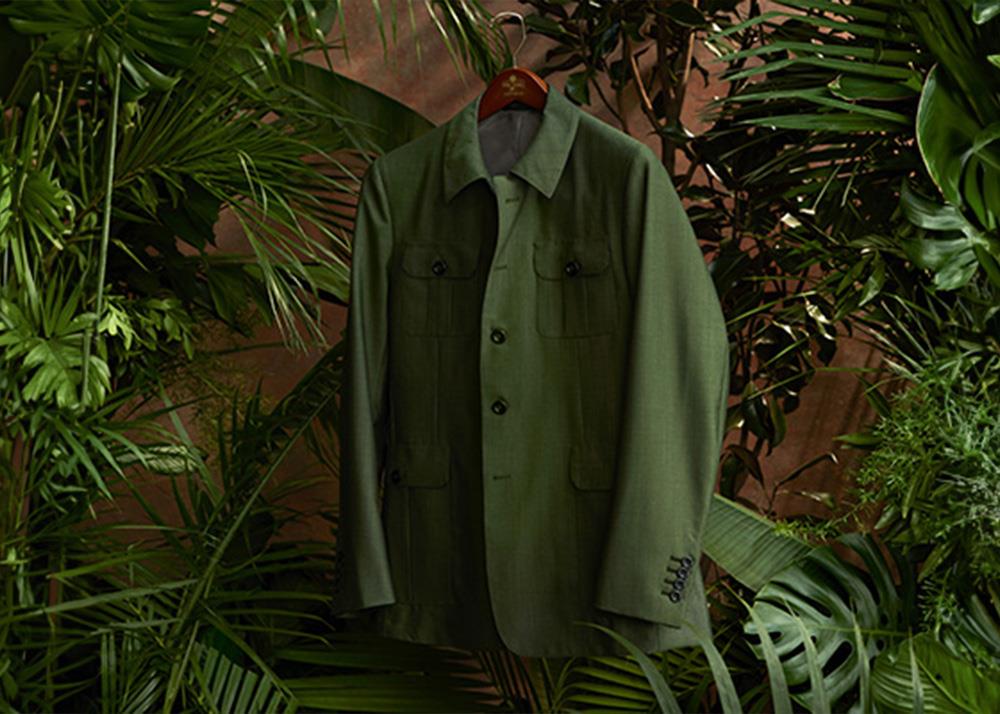Discovering the Rise of Cape Town Sustainable Fashion Brands
Discovering the Rise of Cape Town Sustainable Fashion Brands
Blog Article
Remain Ahead of the Curve by Checking Out Innovative Style Patterns
In a market as vibrant as fashion, remaining in advance entails even more than simply complying with present trends-- it demands an expedition of technology. The convergence of technology and fashion advertises a new period of customer interaction.

Embracing Smart Textiles
In recent years, the fashion business has actually observed a transformative shift with the assimilation of wise textiles, a cutting-edge development that mixes innovation with material. This evolution represents not only a combination of visual appeals and functionality however additionally a significant leap in the direction of sustainability and personalization in style. Smart fabrics, likewise known as e-textiles, installed sophisticated electronic devices such as sensors and conductive strings within the fabric, enabling garments to interact with the user or the setting.
These fabrics are created to monitor physiological specifications, such as heart rate or body temperature, offering real-time health analytics. Past health applications, clever fabrics are likewise being utilized for adaptive clothes, which can change shade or pattern in response to ecological stimulations, thus providing a dynamic style experience.
Additionally, the advancement of energy-harvesting textiles that generate power from movement or sunshine is leading the method for self-dependent wearable innovation. This development is attracting ecologically aware customers and designers intending to reduce the ecological footprint of fashion. As study and development in this field development, clever textiles are expected to become increasingly widespread, improving the landscape of contemporary fashion with their multifunctional capabilities.
The Increase of 3D Printing
Changing the manufacturing landscape, 3D printing has actually become a game-changer in the garment industry. This innovative modern technology has allowed developers to push the boundaries of creative thinking, generating elaborate and personalized garments that were previously unbelievable. By leveraging electronic layout and additive manufacturing, 3D printing assists in the development of intricate geometries and patterns, permitting developers to trying out new appearances and structures.
A noteworthy advantage of 3D printing in style is its capability to create on-demand, minimizing waste and lowering inventory needs. This effectiveness not only enhances production procedures however also permits fast prototyping, enabling designers to bring their visions to life in a much shorter duration. Moreover, 3D printing supports modification to a degree unparalleled by typical approaches, providing one-of-a-kind layouts and customized fits customized to private consumer choices.
The surge of 3D printing has additionally equalized style, making it obtainable to arising developers that can currently fabricate premium items without substantial monetary investment in standard production facilities. As modern technology remains to advancement, the fashion business is positioned to harness the full potential of 3D printing, exploring brand-new products and strategies that will certainly redefine exactly how fashion is conceived and created.
Lasting Style Technologies
As the fashion business grapples with the pushing demand for environmental duty, lasting style advancements have arised at the forefront of transformative adjustment. The expanding understanding of ecological impact has actually fueled a change towards more eco-conscious techniques and materials. Brands and designers are currently focusing on sustainability, integrating techniques that minimize waste and reduce carbon impacts.
One significant growth is look what i found the surge of circular style, which stresses recycling and upcycling to prolong the lifecycle of garments. This technique not just minimizes waste however additionally urges consumers to embrace an extra conscious method to garments usage. Additionally, using lasting products, such as natural cotton, hemp, and recycled polyester, has actually acquired traction. These materials require less water and energy during production, dramatically reducing ecological effect.
An additional advancement lies in the fostering of innovative dyeing techniques that utilize waterless procedures or natural dyes, thereby lowering the vast quantities of water and chemicals generally used in fabric dyeing. Furthermore, advancements in biotechnology have led to the production of lab-grown leather and textiles, using cruelty-free and ecologically pleasant choices to standard materials. Via these pioneering efforts, the garment industry is making meaningful strides in the direction of an extra lasting future.

Tech-Integrated Clothing
Tech-integrated apparel stands for a groundbreaking fusion of fashion and modern technology, reshaping just how individuals engage with their apparel. This innovative domain name is marked by the inclusion of clever fabrics and ingrained electronic components, boosting both capability and visual appeal. From physical fitness trackers installed in sports apparel to heated coats managed using smartphone applications, tech-integrated garments uses consumers extraordinary ease and flexibility.
Pioneering brands are driving this trend, focusing on creating garments that react to environmental stimulations or individual commands. As an example, some garments can transform color or pattern in response to temperature level shifts, while others include biometric sensing units to check health metrics like heart price or anxiety degrees. The seamless combination of modern technology right into fabrics additionally expands to ecological sustainability, with efforts to develop self-cleaning fabrics or garments that get used to weather, therefore lessening the requirement for several layers.
Moreover, the advent of wearable technology is not just restricted to clothing but extends to accessories like watches and eyewear, further broadening the range of tech-integrated style. As the sector remains to innovate, the capacity for modification and customization in clothing expands, supplying consumers one-of-a-kind, tech-enhanced fashion experiences that provide to their private needs and choices.
Future of Virtual Fashion
Over the last few years, the future of digital style has actually arised as a transformative force within the market, leveraging innovations in digital technology to redefine exactly how style is created, experienced, and check out this site consumed. By integrating augmented truth (AR), online truth (VIRTUAL REALITY), and 3D style devices, designers can now craft immersive and interactive experiences that transcend conventional fashion borders. Online fashion allows for the creation of garments that exist entirely in digital environments, providing countless opportunities for development without the restrictions of physical manufacturing.
This electronic change not only presents chances for innovative expression yet likewise addresses sustainability issues fundamental in traditional style practices. Cape Town Sustainable Fashion. By removing the need for physical sources, virtual style minimizes waste and reduces carbon impacts. Moreover, the rise of virtual fashion aligns with the raising consumer need for special he said and tailored experiences, as online garments can be personalized and tailored to specific preferences with convenience

Conclusion
The fashion sector's future lies in the combination of ingenious technologies and lasting practices. Digital fashion is positioned to redefine customer communications.
In current years, the fashion industry has observed a transformative change with the assimilation of smart fabrics, a sophisticated innovation that blends technology with material.As the fashion market grapples with the pushing demand for environmental duty, sustainable fashion innovations have actually arised at the center of transformative adjustment.In recent years, the future of digital fashion has actually emerged as a transformative pressure within the industry, leveraging developments in digital technology to redefine exactly how style is developed, experienced, and consumed. The surge of virtual fashion straightens with the boosting customer demand for one-of-a-kind and personalized experiences, as online garments can be customized and customized to private preferences with ease.
The fashion market's future lies in the assimilation of sustainable methods and innovative technologies.
Report this page